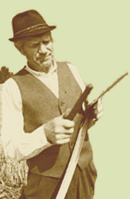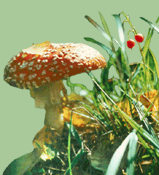Tree of the year: Yew tree in Estonia and elsewhere
Lea Vaher describes the rarest of our domestic conifer species, and its use in Estonia and elsewhere in the world. The Irish yew tree, growing in its north-eastern edge of distribution in Estonia, is the most common among the 8-10 species of the worlds yews. It is an interesting relic species with extraordinary vitality and adaptability. The yew tree has remarkably slow growth and long life-time (up to 2000-4000 years). It is a poisonous tree all over and even a few berries can cause lethal results for humans as well as for cattle, especially for horses. The article gives a thorough and interesting overview of this little-known species.
Estonian Nature enquires
Enn Vilbaste writes about the impacts of Estonia joining the Schengen visa space, i.e., the loss of borders.
Agu Remmelg reflects on the effects of the new waste sorting regulation for waste managers.
Three quarters of a century of Estonian Nature
A look into the history of Eesti Loodus in text and pictures. On February 15th, 1933, the first issue of Eesti Loodus was published by the Estonian Naturalists Society. The journal was published in 1933-1940, and was enlivened in February 1958. Therefore we can celebrate two anniversaries: 75 years from the first issue of Eesti Loodus, and 50 years from the birth of the new Eesti Loodus. The article summarizes the main points in the history of the magazine.
A handshake
Erni Krustens short story about spring, and offspring of humans and birds. The short story was first published in the first issue of the 1958 Eesti Loodus.
Helpful birds
Tatjana Kramas dissertation created excitement in animal ecology: birds are very helpful not only towards their close relatives, but also towards other birds of the same species. The author has proved that mobbing a joint attack against a predator that would not be attacked alone is common among most small birds. The main thesis of the dissertation was to find out if birds act based on the reciprocal altruism model while mobbing, even if it can cost the bird its life. The article gives an overview of the experiments made and methods used within the study, and the exciting results regarding the mobbing behavior of small birds.
The discovery of the Japanese plants
Heldur Sander reminds stories from the 17th-18th centuries, when the closed society of Japan started to open up for the Europeans. The author lists the main scientists with noteworthy input for the study of Japanese vegetation.
Practical tips: Our mushrooms: Boletes II
Vello Liivs second part of the overview of Boletes, introducing next 5 species, including some rare ones.
The green masters of bird taverns
Toomas Ili takes a glance at the everyday life of the Greenfinch based on his observations by the bird tavern, and presents his close-up photographs of the bird.
Interview: Estonian scientists are pleasantly pedantic
Juhan Javoið has interviewed Mare Lõhmus, an animal scientist and physiologist.
Hiking trail: The trails around Karusekose
Marko Kaldur introduces the hiking trails of the Soomaa National park, which are worth visiting even in wintertime. He briefly describes 4 hiking trails: Riisa (5 km), Meiekose (3 km), Ingatsi and Toonoja trails, as well as the rivers of the park Raudna, Halliste and Navesti that are good for canoeing. Toonoja is an ancient village scattered around on bog islands, with no permanent residents nowadays.
Along the northern spread of the Hornbeam
Tapio Vares shares his impressions of the populations of the Hornbeam in Latvia the northernmost area of the natural distribution of the tree. He gives a short history of the tree in Estonia (during the Atlantic climate period) and describes the Hornbeam specimens met on his trip to Latvia, particularly in Grobina and Lukne. The Lukne Hornbeam wood near the border of Lithuania is Latvias only hornbeam wood.
Whats up with nature?
Conference of Semiotics in Tartu.
Riin Magnus tries to find answers to the abovementioned questions, leaving the ends open. The conference paid much attention to natural disasters and their impacts on societies, but focused also on different meanings of different terms that can cause confusion in discussions about nature and nature protection.
|


![[IN ENGLISH]](images/gb.gif)





